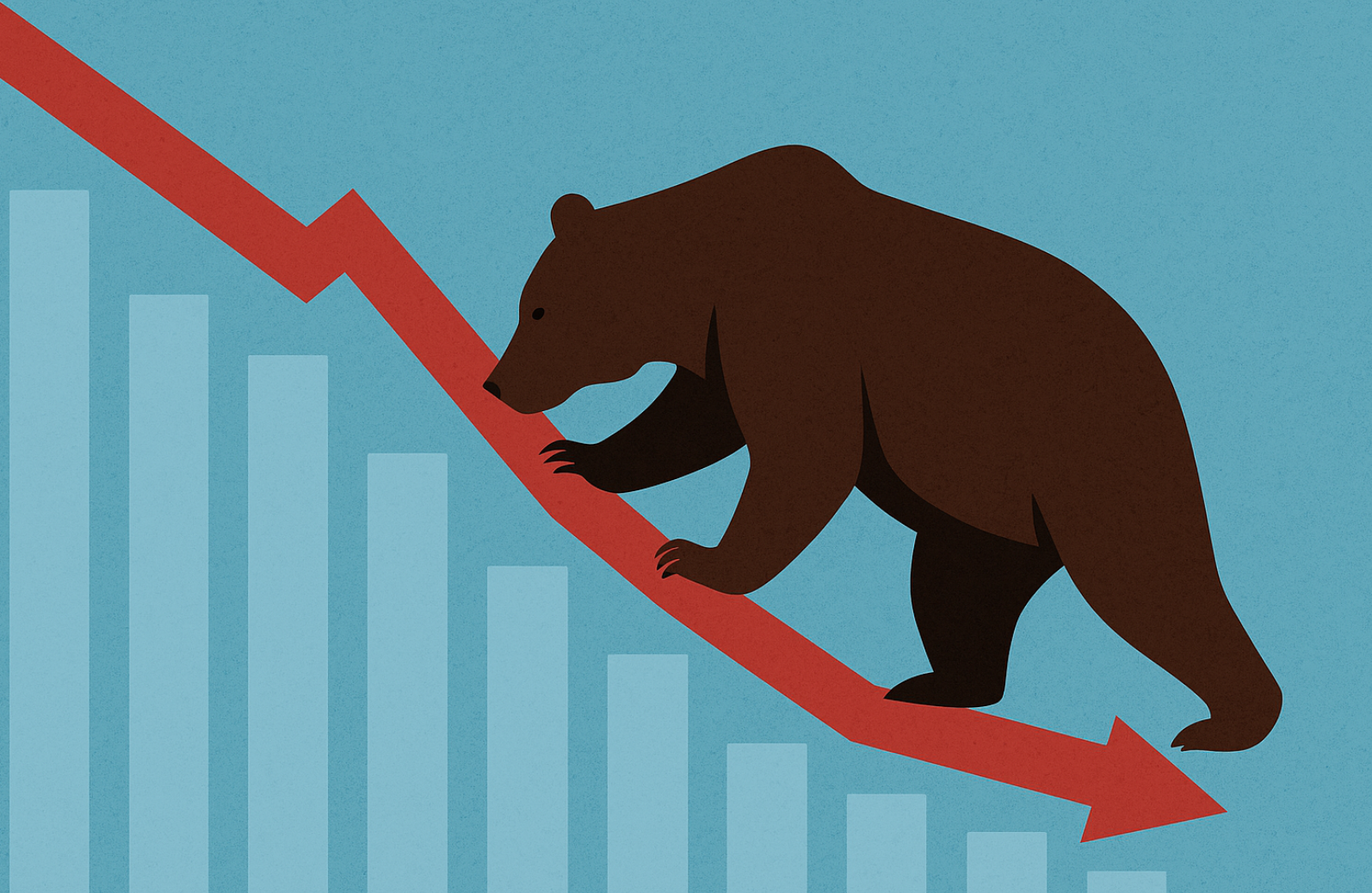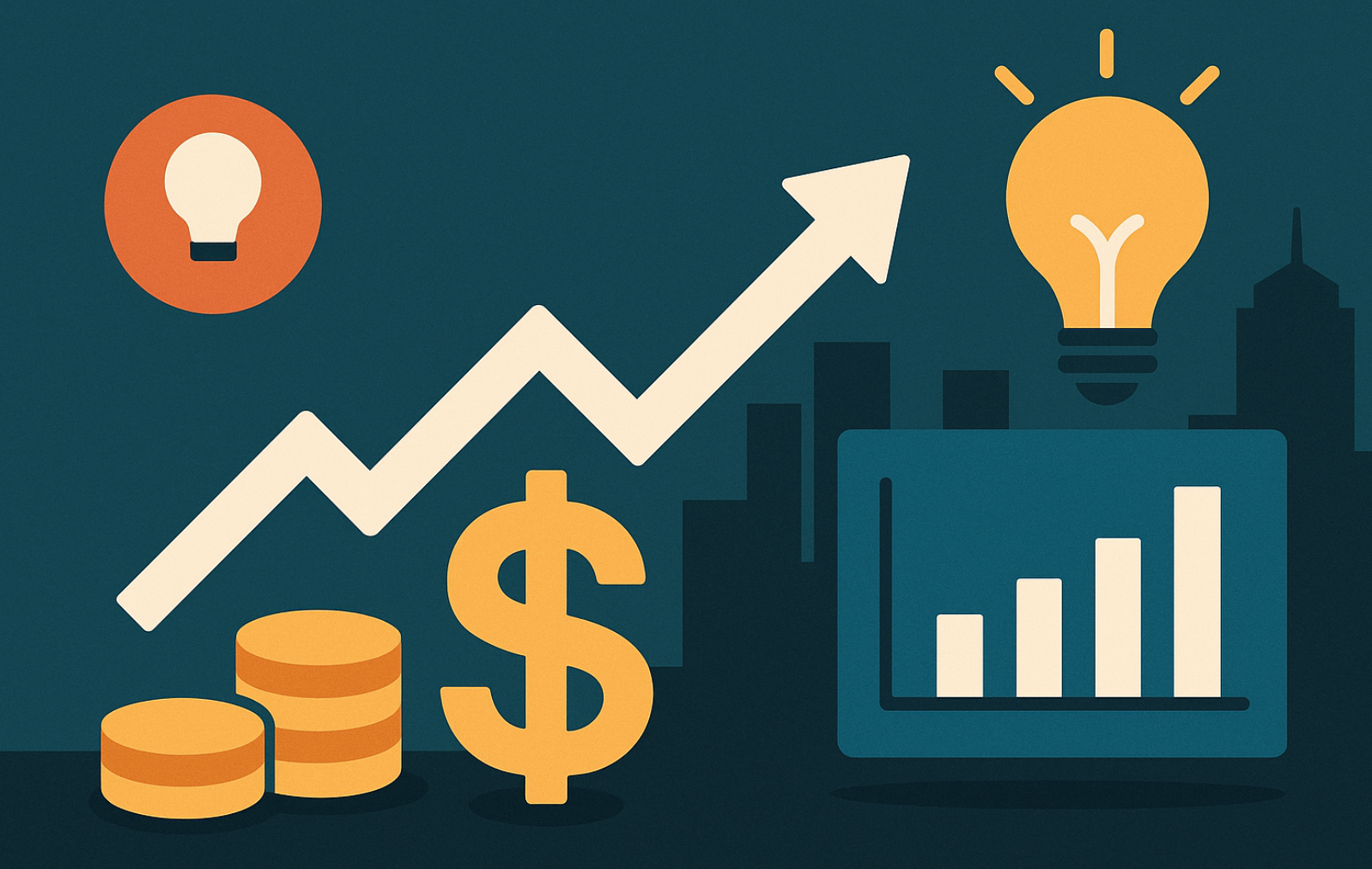Previous Post : Palantir Technologies: The Company That Turns Data into Power
💡 Introduction: Is Your Portfolio Ready for a Recession?
In 2025, the U.S. economy faces a confluence of challenges—persistent inflation, high interest rates, weakening corporate earnings, and a cautious consumer. While the Fed is walking a tightrope between soft landing and recession, investors are left asking: “Where should I invest now?”

2025 U.S. recession investment strategy: 🇺🇸 Across Wall Street and Main Street, sentiment has shifted. Investors are no longer chasing hype—they’re looking for resilient sectors, quality stocks, and smart allocation strategies to protect capital while capturing long-term upside.
😰 “Is this the last window before the market drops further?” 🧠 “Should I wait in cash or rotate into dividend-paying stocks?” These aren’t just theoretical debates—they’re shaping how portfolios are being built today.
❝ The question isn’t whether a recession will come—it’s whether your portfolio is built to endure it. ❞
This post breaks down the key sectors and stocks U.S. investors are betting on in 2025, backed by real market trends and insights from both retail communities and institutional analysts.
📊 How U.S. Investors Are Reacting to Recession Fears
According to recent reports from Morgan Stanley and BlackRock, investors are making a strategic shift. Gone are the days of YOLO bets and pure growth plays. In 2025, it’s all about “resilient positioning”.
🔹 Growing Risk Aversion
- 📉 Rotating from growth stocks into dividend and value plays
- 💼 Increasing cash allocation through money market funds (MMFs)
- 🛡️ Hedging portfolios with gold, short-term bonds, and inverse ETFs
🔹 What Investors Are Prioritizing
- ⚖️ Low volatility and recession-proof sectors
- 💰 Reliable cash flow and dividend yield
- 📈 Exposure to long-term themes like AI and energy transition
Bottom line? Investors aren’t running from the market—they’re rebuilding smarter, leaner portfolios with defense in mind and growth on the horizon.
❝ “Recession isn’t a reason to panic—it’s a reason to refocus.” ❞
🛡️ Defensive Sectors on the Rise: Where the Smart Money Is Going
In times of economic stress, U.S. investors tend to flock to defensive sectors—industries with steady demand regardless of the business cycle. In 2025, this pattern remains true. Capital is steadily flowing into three core areas: consumer staples, healthcare, and utilities.

🥦 Consumer Staples
You might cut back on luxury items during a recession, but you’re not skipping toothpaste, laundry detergent, or coffee. That’s why giants like Procter & Gamble (PG), Coca-Cola (KO), and PepsiCo (PEP) continue to attract investor attention. These companies offer stable earnings, global brands, and reliable dividends.
💊 Healthcare
Recessions don’t stop people from needing medical care. The healthcare sector provides a blend of recession resilience and long-term innovation. Top picks include Johnson & Johnson (JNJ), Eli Lilly (LLY), and UnitedHealth Group (UNH)—all known for stable revenue streams and growing market share.
⚡ Utilities
Think electric bills and water service. Utilities might not be flashy, but they’re essential—and often come with attractive dividend yields. Leaders like NextEra Energy (NEE) and Duke Energy (DUK) are popular among income-seeking investors.
❝ “Recession investing is about staying powered, fed, and medicated.” ❞
💻 Is Tech Still Worth the Risk in 2025?
Despite its reputation for volatility, tech remains a crucial component of many U.S. investors’ portfolios—even during a downturn. The key is selectivity. Not all tech stocks are created equal, especially when rates are high and margins are tight.

🤖 AI and Semiconductors
While big tech may slow, innovation doesn’t stop. Artificial intelligence continues to drive growth in the semiconductor space, with companies like Nvidia (NVDA), AMD, and Broadcom (AVGO) leading the charge. 💡 These names are seen as essential infrastructure for future technologies.
🔐 Cybersecurity
In an increasingly digital world, companies can’t afford to skimp on security—no matter the economy. That’s why cybersecurity leaders like CrowdStrike (CRWD) and Palo Alto Networks (PANW) continue to deliver strong fundamentals and attract capital.
📉 Proceed With Caution
- High P/E growth names are more vulnerable to interest rate pressure
- Focus on companies with positive cash flow and strong balance sheets
- Use dollar-cost averaging to minimize volatility exposure
❝ “Don’t throw out tech—just be smarter about where you bet.” ❞
⛽ Energy & Commodities: Inflation Protection in Action
When inflation bites and uncertainty rises, investors often turn to real assets—and in 2025, that means energy and commodities. These sectors are acting as both recession shields and yield generators.

🛢️ Big Oil Is Back (Again)
Despite the ESG shift, traditional energy companies are still printing money. With oil prices hovering near $85/barrel, giants like ExxonMobil (XOM), Chevron (CVX), and ConocoPhillips (COP) are delivering massive free cash flow and juicy dividends.
🌞 Clean Energy: Long-Term Play with Volatility
Green energy isn’t going away. Incentives from the Inflation Reduction Act are still fueling investment, though short-term volatility is real. If you’re patient, companies like First Solar (FSLR) and Enphase Energy (ENPH) offer long-term upside tied to structural change.
🏅 Gold Still Shines
Gold remains the OG of crisis hedging. It’s non-yielding, but in uncertain markets, it gains value as a safe-haven asset. Popular vehicles: SPDR Gold Shares (GLD), iShares Gold Trust (IAU)
❝ “Oil pays you to wait, gold helps you sleep at night.” ❞
🏦 Financials: Opportunity or Risk Trap?
Financials offer mixed signals in 2025. Rising rates should benefit banks—right? Yes, but only if the economy avoids deep recession. Otherwise, loan defaults and credit risks could explode.
🏛️ Big Banks: Careful Optimism
Names like JPMorgan Chase (JPM) and Bank of America (BAC) remain investor favorites for their scale and deposit strength. But the memory of 2023’s regional banking crisis (e.g. SVB) still lingers, keeping caution high.
📈 Insurance & Asset Managers
If you’re looking for more stability in the financial sector, consider insurance companies and asset managers. They tend to weather downturns better and often deliver steady dividend income.
📌 Top picks:
- BlackRock (BLK) – Global ETF powerhouse
- Progressive (PGR) – Smart pricing and resilient margins
- MetLife (MET) – Dependable dividend play
❝ “Financials are no longer a blanket buy—quality and diversification are everything.” ❞
🏠 Dividend Stocks & REITs: Income and Stability Combined
In a market where capital appreciation is uncertain, investors are chasing reliable income. That’s where dividend-paying stocks and REITs come in.
💸 Why Dividend Stocks Matter Now
Dividend stocks serve as a buffer when prices fall. More importantly, they offer predictable income—a comforting feature during volatile times. High-quality dividend growers, often called “Dividend Aristocrats”, are at the top of many buy lists.
📌 Popular names:
- Coca-Cola (KO) – Over 60 years of uninterrupted dividend hikes
- PepsiCo (PEP) – Defensive consumer staple with dividend reliability
- AbbVie (ABBV) – Strong cash flow from pharma, plus yield
🏢 REITs: Real Estate Income You Can Count On
Real Estate Investment Trusts (REITs) must pay out at least 90% of their income to shareholders, making them ideal income assets. In 2025, well-managed REITs with strong tenants remain highly attractive.
📌 Top picks:
- Realty Income (O) – “The Monthly Dividend Company”
- American Tower (AMT) – Infrastructure REIT focused on data towers
- Public Storage (PSA) – Sector leader in self-storage
❝ “Recessions favor investors who get paid to wait.” ❞
📈 ETF Strategies for a Smarter 2025 Portfolio
For hands-off investors—or those who want quick diversification—ETFs (Exchange Traded Funds) are a no-brainer. In 2025, ETF flows show a clear tilt toward defensive sectors and dividend strategies.
🛡️ Defensive Sector ETFs
Want to buy a whole sector with one click? Sector ETFs make it possible.
- $XLV – Health Care Select Sector SPDR Fund
- $XLP – Consumer Staples ETF
- $VPU – Vanguard Utilities ETF
💰 Dividend and Low-Volatility ETFs
When markets are shaky, low-vol and dividend ETFs become investor favorites. They offer smoother returns and steady cash flow.
- $VIG – Dividend Appreciation ETF
- $SCHD – High dividend, quality screen
- $SPLV – Low Volatility S&P 500 ETF
🔍 Pro Tips for ETF Investors
- Always check the underlying holdings
- Compare expense ratios before you commit
- Match ETF themes with macro trends (e.g., aging population, clean energy)
❝ “ETFs give you instant exposure to entire trends—minus the stock-picking headaches.” ❞
📀 Gold, Bonds & Alternatives: The Comeback of Safe-Haven Assets
When fear dominates the market, capital flees to safety. And in 2025, that means a return to gold, U.S. Treasuries, and alternative assets. These vehicles are increasingly viewed as essential components of a balanced, recession-resistant portfolio.
🏅 Gold: Timeless Crisis Hedge
Gold doesn’t generate income, but it does hold value when everything else is falling. ETFs like SPDR Gold Shares (GLD) and iShares Gold Trust (IAU) are leading choices among U.S. investors for their liquidity and ease of access.
💵 Bonds: Predictable and Secure
Treasuries remain the ultimate safe asset. In particular, many investors are embracing the bond laddering strategy, which staggers bond maturities to reduce reinvestment risk and smooth cash flow.
- Short-term: Treasury bills (T-bills), 1–2 years
- Mid-term: 5–7 year notes
- Long-term: 10+ years, including TIPS (Treasury Inflation-Protected Securities)
🌱 Alternative Assets: Beyond Stocks and Bonds
Non-traditional investments—like infrastructure, farmland ETFs, private equity, and even crypto—are gaining traction among younger investors and high-net-worth individuals.
Popular picks include:
- IFRA – U.S. infrastructure ETF
- FARM – Agriculture and farmland exposure
- GBTC – Bitcoin exposure for the crypto-curious
❝ “Diversification isn’t optional anymore—it’s survival.” ❞
📉 Changing Behavior of U.S. Retail Investors
Retail investors are no longer the meme-chasing traders of 2021. Platforms like Reddit, Robinhood, and eToro now show a growing trend: retail investors are maturing, getting more strategic, and favoring long-term value.
🔍 Information First, Hype Second
Retail traders are relying less on tips and more on data-backed research. Reddit communities such as r/stocks and r/investing are evolving into crowdsourced think tanks, where stock picks come with deep-dive DD (due diligence).
📊 Behavioral Shifts to Watch
- 🧠 More emphasis on fundamentals over FOMO
- 💬 Growing interest in ETFs and long-term themes
- 📉 Less day-trading, more dollar-cost averaging
👥 Gen Z & Millennial Focus Areas
Younger investors are increasingly driven by value alignment and future vision. That means prioritizing:
- 🌱 ESG (Environmental, Social, Governance)
- 🔐 Cybersecurity & digital infrastructure
- 🧬 Health tech and AI-driven innovation
❝ “Retail investors are no longer the underdogs—they’re a growing force with influence.” ❞
🧠 Expert Forecasts & Portfolio Recommendations for 2025
Major institutions like Goldman Sachs, Morgan Stanley, and BlackRock have weighed in on how investors should prepare for potential turbulence in 2025. Their guidance offers valuable insights into smart allocation and risk mitigation.

🔮 Goldman Sachs
Goldman forecasts a modest economic slowdown in the first half of 2025, with a possible rebound in the second half. Their recommended approach? A balanced mix of defensive and innovative growth plays, particularly in health care, infrastructure, and AI.
🏦 Morgan Stanley
Morgan Stanley leans cautious, advising investors to maintain high cash buffers and emphasize quality over quantity. They advocate for bond diversification, dividend stocks, and infrastructure-focused ETFs.
🧠 BlackRock
BlackRock emphasizes global diversification and sees value in overseas markets like India and Europe. They continue to support ESG themes and long-duration strategies despite market volatility.
❝ “Success in 2025 will come not from predicting the market, but preparing for multiple outcomes.” – BlackRock Research ❞
🧭 Across the board, experts agree on a few key principles: quality, diversification, income generation, and selective growth exposure. This is not the time for extremes—it’s the time for precision.
⚠️ Key Risks Investors Should Watch
Recession or not, the road ahead is full of potential pitfalls. Smart investors aren’t just asking “What should I buy?” but also “What should I watch out for?”
📉 Labor Market & Consumer Weakness
If unemployment rises and real wages fall, consumer spending could take a hit—dragging down earnings across multiple sectors. Consumer discretionary and retail stocks are especially vulnerable.
📊 Persistent Inflation & Hawkish Fed Policy
A more aggressive Federal Reserve could keep interest rates higher for longer, compressing valuations and hurting growth stocks. Even small rate hikes could cause outsized market reactions in today’s environment.
🌍 Geopolitical Tensions
Ongoing conflicts in Ukraine, the Middle East, and escalating U.S.-China tensions remain key global risks. These disruptions can affect supply chains, commodity prices, and overall investor sentiment.
- 📦 Supply chain volatility
- 🌐 Currency fluctuations
- ⚠️ Increased cyber threats
❝ “Risk management isn’t a hedge—it’s a habit.” ❞
The best defense? Build a portfolio that doesn’t rely on perfect predictions, but instead can withstand the unexpected.
🧭 Conclusion: Building a Recession-Resilient Portfolio in 2025
The economy may be slowing, but that doesn’t mean your portfolio has to. With smart allocation and a focus on quality, you can ride out the storm and position for the recovery.
✅ Portfolio Checklist for 2025
- 🛡️ Defensive sectors: Healthcare, Consumer Staples, Utilities
- 💸 Income generators: Dividend stocks and REITs
- 📈 Long-term themes: AI, Cybersecurity, Clean Energy
- ⛽ Hedges: Energy, Gold, Treasury Bonds
- 🧠 Smart vehicles: ETFs with low fees and strategic exposure
More than anything, 2025 calls for a portfolio that is balanced, forward-looking, and grounded in fundamentals. Don’t try to time the market—build a structure that can thrive in any market.
❝ “The goal isn’t just to survive a recession—it’s to come out stronger on the other side.” ❞
❓ FAQs: U.S. Recession Investment Strategy 2025
1. What are the safest stocks to own in a recession?
Focus on companies in defensive sectors with strong balance sheets and consistent cash flow—such as Johnson & Johnson, Procter & Gamble, and PepsiCo.
2. Should I still invest in tech during a recession?
Yes, but be selective. Look for profitable tech companies tied to structural trends like AI and cybersecurity. Avoid unprofitable growth names with stretched valuations.
3. Is now a good time to increase my bond exposure?
Absolutely. U.S. Treasuries and investment-grade corporate bonds offer both income and downside protection—especially in a high-rate, low-growth environment.
4. Can ETFs fully replace individual stock picking?
For many investors, yes. ETFs offer broad diversification, low fees, and strategic focus. Combining sector ETFs with dividend or low-volatility ETFs can build a strong, simple portfolio.
5. Should I keep cash on the sidelines in 2025?
It’s smart to keep some cash for flexibility—but letting too much sit idle may cost you in the long run. Consider deploying gradually via dollar-cost averaging (DCA) into quality assets.
